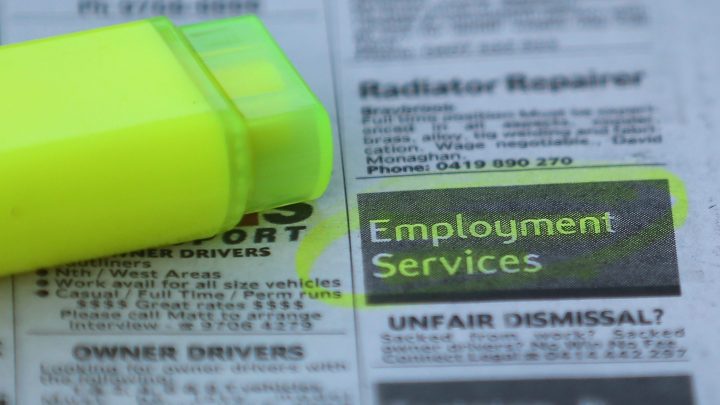
Weekly jobless claims dip, but they’ve climbed this spring. What’s the takeaway?
Weekly jobless claims dip, but they’ve climbed this spring. What’s the takeaway?

It’s been a heavy week for consumer-economy data — the consumer price Index, retail sales. Also a cartful of corporate earnings — suggesting how the folks who sell to consumers are doing. Not so much on the labor market lately, though.
But we’ve taken note of a set of numbers that comes out every Thursday morning: weekly jobless claims. That’s first-time filings for unemployment insurance reported by every state and added up to cover the whole country.
Last week, it totaled 222,000. The week before, it was even higher — 232,000.
At the beginning of the year, claims were running superlow, below 200,000. Through early spring, they’d been hovering in the 210,000 range, until this spike in May. So is it just a blip? Or a sign of worse news to come about the job market and layoffs?
Here’s why we pay attention to weekly state administrative data on unemployment insurance, said Tuan Nguyen, U.S. economist at consulting firm RSM: “Initial jobless claim data is one of the closest things to real-time and high-frequency data that we have on the job market.”
In other words, the time lag between the gathering and the reporting of the data is brief.
Nguyen called some of the recent spike in claims seasonal noise. But if you zoom out?
“Claims have been on a small upward trend since January. We don’t believe it is a cause for concern at the moment — more like the labor market is cooling gradually rather than getting into trouble,” he said.
But there does appear to be growing agitation among the working public.
The Conference Board reports more Americans anticipate that jobs will be harder to find, and employment and income trends will worsen, in the coming months.
“Is the consumer hearing — just from where they live, their neighbors, their relatives — that perhaps the labor market is poised to soften more? We know that is when the consumer really starts to hold back spending,” said Quincy Krosby, chief global strategist at LPL Financial.
And there may be more job losses than we know about.
“The caveat I always have about initial claims is that it doesn’t necessarily measure the number of layoffs, it just measures the number of people who are laid off and then decide to apply for unemployment,” said Michele Evermore, an expert on unemployment insurance at the Century Foundation.
Why wouldn’t laid-off workers apply for benefits they’re entitled to?
“They’re relatively certain they’re going to get a job because unemployment is low,” she said.
Or, they could be discouraged. “Some states have made it harder to apply. I think inflation has really eroded the value of benefits,” Evermore said.
Only about half of states automatically adjust payments for inflation.
“You’ve still got a maximum benefit in Mississippi of $235 a week. And in Florida and Tennessee, $275,” she said.
Evermore said some people may feel it’s just not worth going through the bureaucratic hassle to file.
There’s a lot happening in the world. Through it all, Marketplace is here for you.
You rely on Marketplace to break down the world’s events and tell you how it affects you in a fact-based, approachable way. We rely on your financial support to keep making that possible.
Your donation today powers the independent journalism that you rely on. For just $5/month, you can help sustain Marketplace so we can keep reporting on the things that matter to you.











